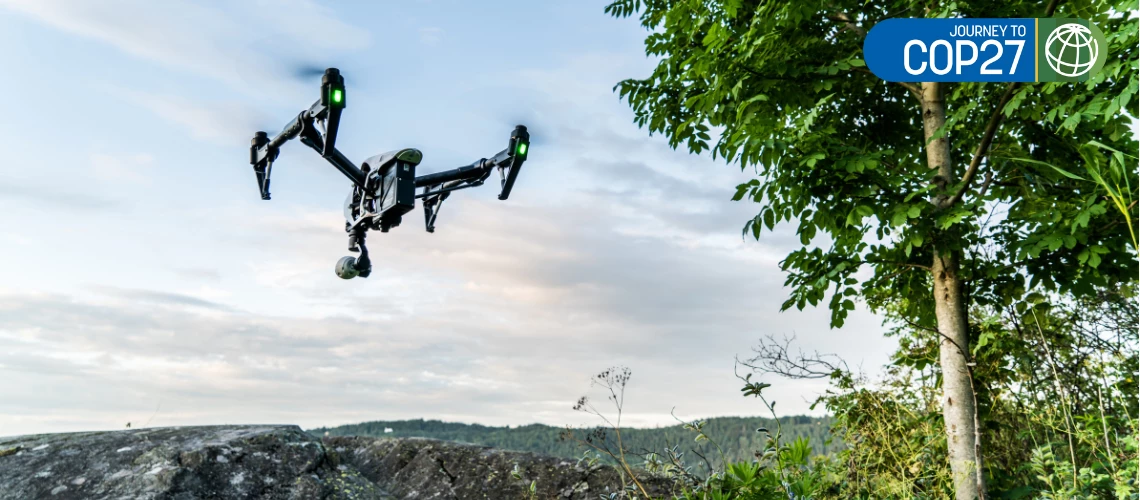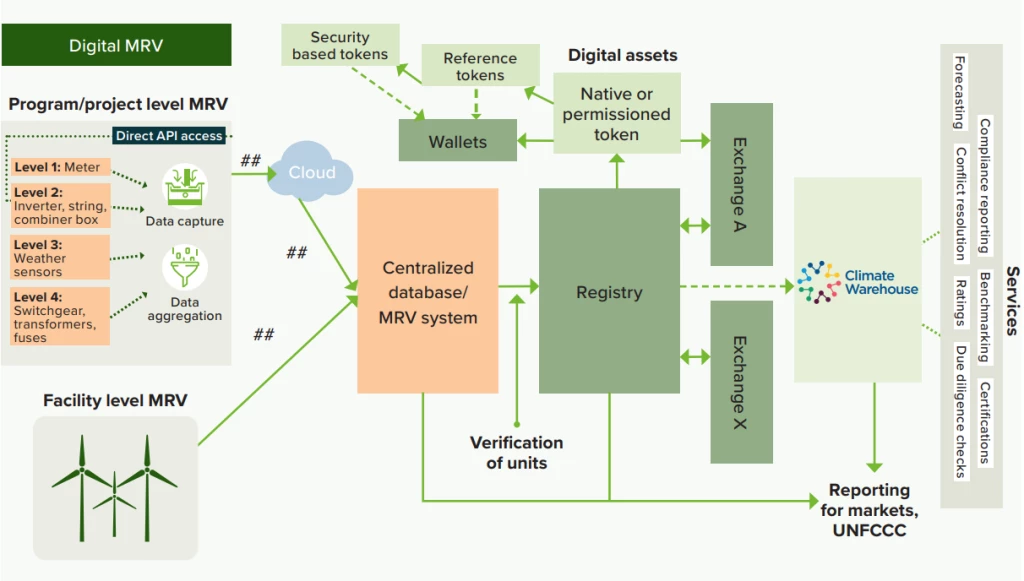 Drone flying over a forest
Drone flying over a forest
A cornerstone of carbon markets has been the Monitoring, Reporting, and Verification (MRV) of reductions in greenhouse gas emissions. MRV is a multi-step process to measure the emission reductions achieved by a specific mitigation activity, report the findings to an accredited third party, and verify the reductions so they can be certified, and carbon credits can be issued. Currently, the process is often costly, time-consuming, and susceptible to error, as it relies on manual information recording or in-person surveys. But increasingly, digital technologies are being used to streamline data collection, processing, and quality control in MRV processes. A growing number of countries are considering, or already using, digital MRV systems and processes that could ultimately make it easier for them to shift to decarbonization pathways as well as meet the goals of the Paris Agreement.
Digitization of MRV systems will also make carbon markets function better. While the bottom-up nature of the Paris Agreement gives countries flexibility to meet climate targets, it has resulted in the increased complexity and diversity of MRV systems by different countries and market players. Widespread adoption of Digital MRV (D-MRV) systems -- and the simplification of MRV processes this enables -- will greatly increase the efficiency of future carbon markets. Transitioning to credible and compatible D-MRV systems to track greenhouse gas emissions will enable post-2020 carbon markets to be scaled up and increase their transparency.
"Widespread adoption of Digital MRV (D-MRV) systems -- and the simplification of MRV processes this enables -- will greatly increase the efficiency of future carbon markets."
Removing barriers and creating an enabling environment
This potential of D-MRV and the suggested measures to unlock it are described in the recently published World Bank study Digital Monitoring, Reporting, and Verification Systems and Their Application in Future Carbon Markets. The study identifies the key barriers to D-MRV systems:
- The cost of emerging technologies can be prohibitive
- D-MRV systems could capture sensitive data, necessitating additional privacy controls to be put in place
- Developing countries often lack capacity to use emerging digital technologies. The removal of this barrier is especially important to ensure equitable access to carbon markets, particularly in areas where capacity for innovative approaches is low
Governments should create an enabling environment for D-MRV systems to support the design, implementation, and operation of these systems. For example, governments and relevant institutions could develop policies or guidelines that clearly state how sensitive information may be collected, used, and stored. Governments also need to ensure that the required infrastructure, power, and data networks are available for digital technologies to be effectively implemented. Strategic tax incentives can also promote the use of desired emerging technologies.
Independent standard organizations are adapting their MRV protocols as well to allow for digitally collected data and establish rules for how these systems are validated and verified. For example, allowing for one-off, on-site validation using a D-MRV system certification, followed by recurring remote verifications, would increase the speed of validation and verification while reducing the overall cost of generating mitigation outcomes and incentivizing the use of digital technologies.
To promote the development of an enabling environment, the D-MRV study proposes tools and guidelines to assess D-MRV systems, evaluates the suitability of a parameter or methodology for digitalization, and lists commonly monitored parameters and corresponding, appropriate digital technologies, or combinations of technologies, to track these parameters. The study also has case studies on existing D-MRV systems around the world.
End-to-end digitalization
D-MRV systems are one component in the end-to-end digitalization of the generation, transfer, and reporting of carbon assets under post-2020 carbon markets. In addition to using emerging technologies to improve data collection and verification, D-MRV systems can be connected to national or global registries to automate fulfillment of reporting requirements.

The use of blockchain technology to create immutable and auditable data and transfer records, including the creation of mitigation outcomes in digital form and underpinned by smart contracts, is another important component of end-to-end digitization of carbon markets that the industry is designing and implementing.
"D-MRV systems have the potential to make future carbon markets more streamlined and cost-effective in generating carbon assets and verifying emission reductions."
Moving forward
D-MRV systems have the potential to make future carbon markets more streamlined and cost-effective in generating carbon assets and verifying emission reductions. In addition, once the upfront costs and increased technical complexity of implementing a D-MRV system are overcome, the effort to replicate or scale the system is much less than a conventional MRV system. Creating an enabling environment and further piloting of D-MRV systems will promote continued improvement of emerging technologies while contributing to the knowledge base of D-MRV systems.
It is widely believed that leveraging market mechanisms to reduce carbon emissions will greatly reduce the cost of decarbonizing the world economy. The full potential of carbon markets to help combat climate change can be unlocked through digital technologies and D-MRV systems. These technologies set the stage for future innovations such as the tokenization of carbon assets through blockchain technology, and real-time issuance of mitigation outcomes from projects with system-wide certification of their D-MRV.


Join the Conversation